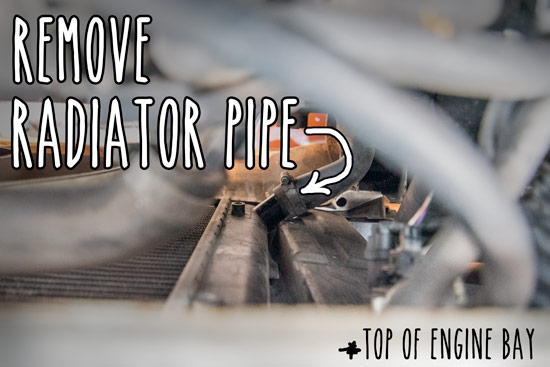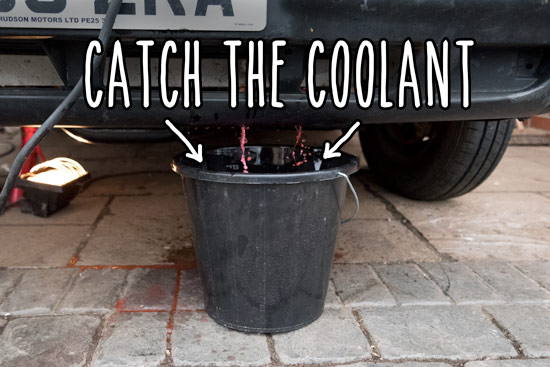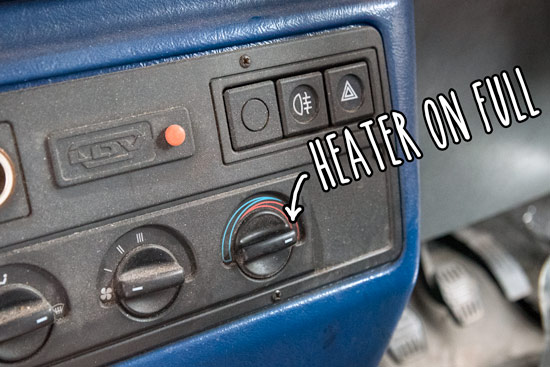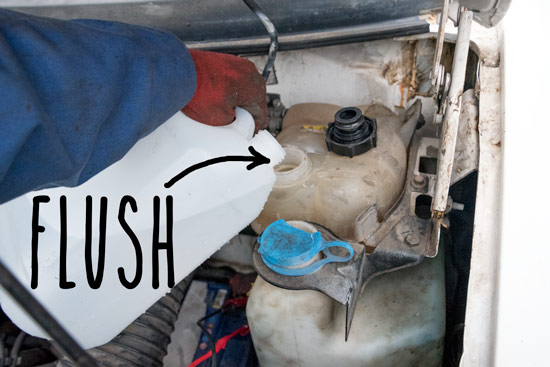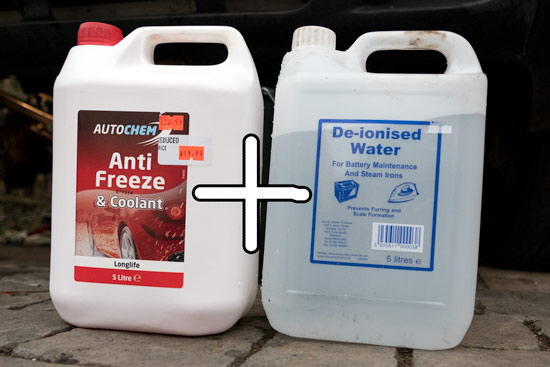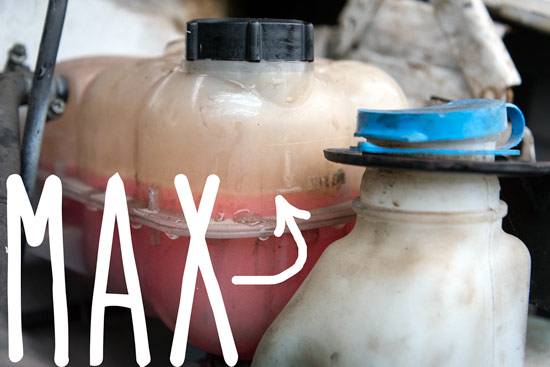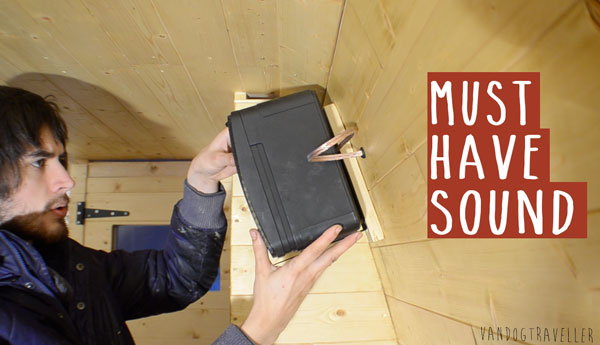The engine coolant is easy to forget about yet it’s job is really important – it keeps the engine from overheating, stops internal corrosion and prevents freezing.
But why change the coolant? The chemicals in an engine coolant start to break down and stop doing their job after a while – about 2 years for normal coolant (usually coloured blue) and about 5 years for OAT (organic acid technology) type coolant – usually coloured red.
This posts goes over how I changed the coolant in my LDV Convoy van. It’s a simple job that anyone can do. It took me 25 minutes and much of that was waiting for the old coolant to drain out.
By the way, I’m not an expert (I only learnt about coolant types about 2 hours ago) and I’ve never changed engine coolant before but this should show you that it’s just a simple thing you can do yourself.
Edit: the coolant system in my engine is self-bleeding, otherwise I’d probably have to bleed the coolant system to make sure there’s no trapped air – can potentially cause damage. My engine is a Ford Duratorq 2.4L DI
1. Drain the old coolant
Some engines have a dedicated drain plug for the coolant. You can either remove that or just remove a pipe to the radiator at the front of the engine – that’s what I did. I had a bucket underneath to catch it.
2. Get it all out
I turned the cab heater on to full heat. This opens the valve to the heater matrix to drain all the coolant from in there as well. I took the cap off the coolant expansion tank to make it drain quicker and briefly started the engine to get all the coolant out of the water pump. The bulk came out quickly but to get all of it out I had to leave it for about 10 minutes.
3. Flush through with water or coolant flush
I didn’t bother with engine flush. It’s another thing that engine manufactures do not recommend yet some people seem to swear by it. How you can tell the difference I have no idea (maybe someone can explain in the comments). I just poured in a few of litres of water and let it run though.
4. Put back the heater pipe or drain plug
After the coolant was all out I put the heater pipe back and secured it into the same position it was in before. I wiped this connection completely dry so I’d be able to spot any leaks that were because of my disconnecting/connecting.
5. Fill with the required mixture of coolant and deionised water
I used a 50/50 mixture of OAT coolant and deionised water. A total volume of 9 litres. I filled to the max line on the expansion tank.
6. Start engine to let it run round. Top up if needed
I started the engine to let the coolant run round. The level dipped a bit so I topped up.
7. Keep an eye on the level over the next few days
When ever I mess around with something I like to keep and eye to see if I messed anything up or forgot to put something back properly. Coolant falling out the engine (and not knowing) could be disastrous. It’s good to check.
And that’s it. Feel free to add any tips or anything I’ve missed in the comments.

